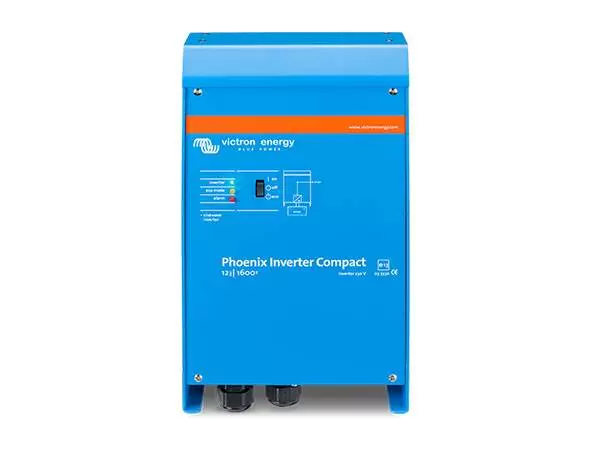A portable inverter can be a game-changer when powering your devices on the go. Whether camping in the woods, working remotely at a job site, or needing backup power during an outage, choosing a suitable Portable-Inverter is crucial. With so many options available, how do you know which fits your needs? The good news is that finding the perfect inverter doesn’t have to be overwhelming. This guide will explain everything you must consider when selecting a Portable-Inverter.
Key Factors to Consider When Choosing the Right Portable-Inverter
A Portable-Inverter ensures a reliable power supply during outdoor activities, off-grid living, or emergencies. It will help you power your devices efficiently while meeting your needs. Here are the key factors to consider when selecting a Portable-Inverter.
Power Output
Consider the wattage you need to power your devices. Inverters come in various power capacities, and choosing the right size is crucial. Ensure the inverter’s power output matches or exceeds the wattage requirements of the devices you plan to run, such as laptops, fridges, or small appliances.
Portability and Size
Since portability is a crucial feature, choose an inverter that is compact and lightweight enough for your intended use. Look for a model that balances power output with easy transport, making it ideal for camping, road trips, or emergencies without adding too much weight.
Battery Type and Compatibility
Check if the Portable-Inverter is compatible with your battery type, such as lead-acid or lithium. Lithium batteries tend to be lighter, more efficient, and last longer, but they may come at a higher price. Ensure the inverter supports the type of battery you plan to use for the most efficient performance.
Efficiency and Run Time
Look for an inverter with high efficiency to maximize battery usage and ensure longer run times. Inverters with higher efficiency will convert more energy from the battery to power your devices, minimizing waste and allowing you to use the inverter for extended periods without recharging.
The Importance of Size and Weight When Selecting a Small Portable Inverter
When selecting a Small Portable Inverter, size and weight play crucial roles. A compact design allows for easy transport, especially if you’re taking it on outdoor adventures or road trips. You don’t want to lug around extra bulk that can take up valuable space in your vehicle.
Weight also factors into usability. Light inverters are easier to handle during setup and breakdown, making them ideal for camping or tailgating. However, consider its weight carefully if you plan to carry your inverter over long distances.
Additionally, the size of the inverter influences how many devices you can connect simultaneously. Smaller models may have limited outlets but still pack enough power for essential electronics like phones and laptops. Balancing these elements helps ensure you choose an inverter that fits seamlessly into your lifestyle without added hassle.
Choosing Between Pure Sine Wave and Modified Sine Wave Inverters
When selecting a Portable-Inverter, you’ll encounter two primary types: pure sine wave and modified sine wave. Pure sine wave inverters produce a smooth, consistent waveform that mimics the electricity supplied by your utility company. This makes them ideal for sensitive electronics like laptops or medical devices.
Modified sine wave inverters are more affordable and straightforward in design but generate a choppier waveform. While they can power many appliances, they might create issues with specific devices, especially those requiring precise voltage waves.
Choosing between these options depends on your power needs. If you’re powering essential tools or lights, modified sine may suffice. However, if you use high-end electronics regularly, investing in a pure sine wave inverter is likely worth it for peace of mind and optimal performance.
Battery Compatibility: What to Know When Choosing a Portable-Inverter
Battery compatibility is crucial when selecting a Portable-Inverter. Different inverters work with specific battery types, such as lead-acid or lithium-ion. Matching your inverter with suitable batteries is essential to ensure efficiency and longevity.
Consider the voltage requirements of both your inverter and batteries. Most Portable-Inverters operate at 12V, but verifying that your battery matches this specification is essential. Using incompatible voltages can lead to malfunction or damage.
Check the capacity of your battery bank against your devices’ power demands. A higher-capacity battery provides longer run times for more significant energy needs. Understanding these details will help you select an inverter that meets your power requirements seamlessly.
The Role of Portability in Selecting the Best Inverter for Your Needs
When selecting a Portable-Inverter, portability is key. These inverters’ primary purpose is convenience, allowing you to power devices on the go. Whether camping or tailgating, the size and weight can significantly influence your experience.
A lightweight model makes it easy to transport without sacrificing performance. Look for designs that include handles or wheels for added mobility. This feature becomes especially important when planning extended outdoor activities where space and ease of movement matter.
Consider how you’ll be using the inverter daily. Compact options are ideal if they are primarily for travel. However, if you need extra capacity occasionally at home or work sites, balance portability with power needs carefully to find what best suits your lifestyle.
How to Assess the Efficiency of an 800 Watt Inverter
When evaluating the efficiency of an 800 Watt Inverter, start by checking its conversion rate. This metric tells you how effectively the inverter transforms DC power from a battery into usable AC power. A suitable inverter typically boasts an efficiency rating between 80% and 95%.
Next, consider the no-load current draw. This figure indicates how much energy the inverter consumes when idle. A lower no-load draw means better efficiency, conserving battery life while not powering devices.
Look at user reviews and independent tests that provide real-world performance data. These insights can reveal whether the manufacturer’s claims hold up under practical conditions. Understanding these factors helps ensure your choice meets your needs and expectations for portability and reliability.
Understanding Safety Features: What to Look for in a Portable-Inverter
Safety features are crucial in protecting your devices and yourself when selecting a Portable-Inverter. Look for built-in protections like overload, short circuit, and over-temperature shutdowns. These safeguards can prevent damage to both the inverter and your electronics.
Another essential feature is grounding. An adequately grounded inverter helps reduce the risk of electric shock or fire hazards. Additionally, consider models with fuse protection; fuses can blow when there’s an issue, providing another layer of security.
Always check for certifications from organizations such as Underwriters Laboratories (UL) or the American National Standards Institute (ANSI). These endorsements indicate that the inverter meets specific safety standards. Reviewing these safety aspects will lead to more secure operation during use.
How to Choose a Portable-Inverter for Outdoor Activities and Camping
When selecting a Portable-Inverter for outdoor activities and camping, consider your power needs first. List the devices you plan to use, like lights, cooking equipment, or charging gadgets. This helps determine the wattage you’ll require from your inverter to keep everything running smoothly.
Portability is vital when camping. Look for lightweight options that are easy to carry and set up. Compact designs can fit into tight spaces in your vehicle while still providing ample power for your essentials.
Remember battery compatibility as well. If you’re going off-grid, choose an inverter that works seamlessly with your existing batteries or solar setups. A good match ensures efficiency and reliability during those much-needed outdoor adventures.
How Long Will Your Devices Run? Matching Inverter Capacity with Battery Life
Understanding how long your devices will run on a Portable-Inverter depends mainly on the inverter’s capacity and battery life. To estimate this, determine the wattage of the devices you plan to power. Take note of their continuous and peak power requirements.
Next, check your battery’s amp-hour (Ah) rating. Multiply this by its voltage to get the total watts available. For example, a 12V battery with 100Ah can supply 1,200 watts for one hour under ideal conditions.
Calculate runtime using the formula: Runtime (hours) = Battery Capacity (watts) / Device Wattage. This helps ensure you select an inverter that meets device demands and aligns well with your battery’s capabilities for longer-lasting use during outings or emergencies.
The Pros of Different Types of Portable-Inverters
Portable-Inverters come in various types, each with unique advantages and drawbacks. Pure sine wave inverters are ideal for sensitive electronics, providing clean power without distortion. They tend to be more expensive but can efficiently run devices like laptops and medical equipment.
On the other hand, modified sine wave inverters are generally less costly and suitable for essential appliances such as lights and fans. However, they may not perform well with complex electronics or cause overheating issues over time.
Another option is inverter generators, which combine portability with fuel efficiency. While quieter than traditional generators, their output capacity can sometimes limit usage duration. Understanding these pros and cons will help you select the right Portable-Inverter tailored to your needs.
Price vs. Performance: How to Find the Right 24v Inverter Charger Within Your Budget
Finding a suitable 24v inverter charger is all about balancing price and performance. Many budget-friendly options may catch your eye, but it’s essential to consider what you need from an inverter. Look for features that align with your requirements rather than opting for the cheapest model.
Performance matters significantly in determining how well the inverter will serve its purpose. Higher-quality units often include better safety features, efficiency ratings, and durability. These factors can save you money in the long run by reducing potential issues or replacements.
Research different brands and models within your budget range to make informed comparisons. Read user reviews and expert opinions to gauge reliability without overspending. A well-rounded decision ensures you’re investing wisely while efficiently meeting your power needs.
Conclusion
A Portable Inverter can significantly enhance outdoor adventures, emergency preparedness, or daily convenience. Understanding your specific needs is crucial in finding the ideal match. With so many options available, weighing all factors carefully is important. Consider wattage requirements and compatibility with devices you plan to power. Consider size and weight for easy transport, significantly if you frequently move between locations. Don’t forget safety features and efficiency ratings when making your selection.
FAQs
How do I know if my device is compatible with a portable inverter?
Check the wattage of your devices and ensure it doesn’t exceed the Portable Inverter output. Devices like laptops usually require less power than appliances like refrigerators.
What is the difference between pure sine wave and modified sine wave inverters?
Pure sine wave inverters provide cleaner power, making them ideal for sensitive electronics. Modified sine wave inverters may work fine for essential appliances but can cause issues with more delicate equipment.
How long will my battery last when using a Portable-Inverter?
This depends on both the capacity of your battery and the total wattage being drawn by connected devices. A good rule of thumb is to calculate how much energy you need and compare this against your battery’s amp-hour rating to estimate runtime.



